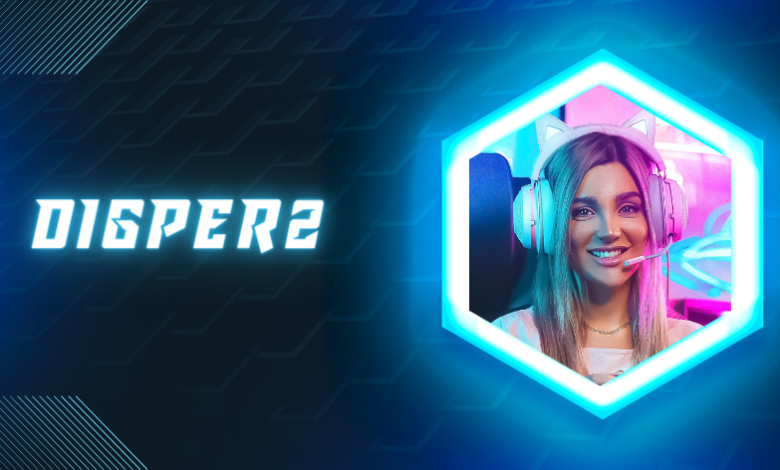Understanding DIGPER2: An In-Depth Guide

Table of Contents
Digital marketing, data analytics, and personalized experiences are becoming the cornerstones of a business’s success in today’s fast-paced world. One of the emerging trends making waves is DIGPER2. While still relatively new, it is gaining attention as an essential tool for businesses aiming to thrive in the digital landscape. This article delves into DIGPER2, breaking down its components, advantages, use cases, and potential to revolutionize modern business practices.
What is DIGPER2?
DIGPER2 stands for Digital Personalized Experience Reformation 2, a concept developed to enhance the personalization and optimization of user experiences across digital platforms. It builds on its predecessor, DIGPER1, by integrating advanced artificial intelligence (AI), machine learning (ML), and big data analytics to provide more intuitive and customer-centric solutions.
DIGPER2 is about understanding individual customer preferences, needs, and behavior patterns to offer tailored experiences in real-time. Through the collection of data and application of algorithms, it can predict user behavior and provide personalized content, offers, and solutions that align with their preferences.
Key Components of DIGPER2
DIGPER2 combines several technological elements that work in unison to provide the best personalized experience possible. These components include:
1. Artificial Intelligence (AI)
AI is the backbone of DIGPER2. It analyzes vast amounts of data quickly, making it possible for businesses to identify trends and predict customer behavior. AI helps improve personalization by continually learning from user interactions.
2. Machine Learning (ML)
ML is responsible for refining the personalization processes. By identifying patterns and trends in customer behavior, ML algorithms adapt and evolve, making recommendations and decisions that better meet the needs of users.
3. Big Data Analytics
Big Data is essential for providing a wide pool of information for AI and ML to analyze. The more data DIGPER2 has access to, the more accurate its predictions and personalized experiences can be. Big data includes user purchase history, search behavior, demographics, and more.
4. Behavioral Analytics
Behavioral analytics is a critical part of DIGPER2. By studying how users interact with a website or app, DIGPER2 can adjust its approach to offer personalized content and recommendations. It takes into account how long a user stays on certain pages, what links they click, and their overall engagement with the platform.
5. Real-Time Data Processing
Real-time data processing enables DIGPER2 to make instant adjustments to user experiences. It allows businesses to cater to users’ needs in the moment, providing dynamic content or suggestions based on what the user is doing right then and there.
How DIGPER2 Works
At its core, DIGPER2 functions through a cycle of data collection, processing, learning, and implementation. This iterative process ensures continuous improvement in personalization and user experience.
1. Data Collection
The process begins with data collection. DIGPER2 gathers information about the user from multiple sources such as website interactions, social media behavior, purchase history, and even external data from partners. This data forms the foundation for personalization.
2. Data Processing
Once the data is collected, DIGPER2 processes it using AI and ML algorithms. These algorithms sift through vast datasets to extract valuable insights regarding customer preferences, behaviors, and expectations.
3. Personalization
With insights at hand, DIGPER2 personalizes the user experience by altering the content, layout, and product recommendations to better suit the individual’s preferences. This process is dynamic, with real-time updates to keep the user engaged.
4. Feedback Loop
Every interaction a user has with the platform becomes part of the feedback loop. This continuous loop allows DIGPER2 to refine and optimize the user experience by learning from each interaction and further tailoring future engagements.
Benefits of DIGPER2 for Businesses

The integration of DIGPER2 can bring numerous advantages to businesses across industries. These benefits include:
1. Enhanced Customer Engagement
DIGPER2 helps businesses engage customers more effectively by providing them with relevant content and experiences. This level of personalization can increase customer satisfaction and build loyalty.
2. Higher Conversion Rates
With personalized experiences tailored to individual preferences, businesses can experience higher conversion rates. DIGPER2’s predictive abilities ensure that users receive content that resonates with their needs, driving more conversions.
3. Improved Customer Retention
DIGPER2 helps businesses build stronger relationships with customers by consistently delivering a personalized experience. This leads to improved customer retention as users feel valued and understood by the brand.
4. Streamlined Marketing Efforts
Businesses can optimize their marketing strategies through the use of DIGPER2. By targeting users with personalized offers and content, companies can reduce wasted marketing efforts and improve the ROI of their campaigns.
5. Data-Driven Decision Making
DIGPER2 provides businesses with in-depth insights into customer behavior, preferences, and trends. These insights allow companies to make informed decisions that align with their audience’s needs, driving better business outcomes.
Use Cases of DIGPER2 Across Industries
DIGPER2’s versatility means that it can be applied across various industries. Here are some examples of how DIGPER2 is being used:
1. E-commerce
In e-commerce, DIGPER2 can revolutionize the way customers interact with online stores. By analyzing a customer’s browsing and purchase history, DIGPER2 can recommend products that match their interests, increasing the likelihood of a purchase.
2. Media and Entertainment
DIGPER2 is used in media and entertainment to recommend personalized content, such as TV shows, movies, or music, based on a user’s preferences. This enhances the user experience by presenting them with content that they are most likely to enjoy.
3. Healthcare
In healthcare, DIGPER2 can provide personalized treatment plans and wellness recommendations based on an individual’s medical history, genetics, and lifestyle. It can also predict potential health risks and suggest preventive measures.
4. Financial Services
In the financial sector, DIGPER2 can personalize financial advice, investment options, and product recommendations based on a user’s financial behavior and goals. This ensures that customers receive relevant and timely financial solutions.
Challenges of Implementing DIGPER2
Despite its many advantages, there are several challenges that businesses may face when implementing DIGPER2.
1. Data Privacy Concerns
One of the main challenges is ensuring data privacy and security. Collecting vast amounts of personal data requires robust security measures to protect sensitive information from cyber threats and data breaches.
2. Integration with Legacy Systems
For businesses with older systems, integrating DIGPER2 can be challenging. These businesses may need to overhaul their existing infrastructure to accommodate the advanced data processing and AI technologies that DIGPER2 requires.
3. Cost of Implementation
The cost of implementing DIGPER2 can be high, particularly for smaller businesses. The expense of acquiring the necessary technology, hiring skilled professionals, and maintaining the system may be a barrier to adoption.
4. Keeping Up with Evolving Technologies
DIGPER2 relies on cutting-edge technology, and businesses will need to stay up-to-date with the latest advancements in AI, ML, and big data analytics. Keeping pace with technological innovations can be a challenge for some companies.
Future of DIGPER2
As technology continues to evolve, so will DIGPER2. Here are some of the potential advancements we can expect in the coming years:
1. Greater Emphasis on Hyper-Personalization
In the future, DIGPER2 will likely focus on hyper-personalization, where every aspect of a customer’s experience is tailored to their unique preferences. This will go beyond basic recommendations and into more nuanced and predictive user interactions.
2. Integration with IoT
The integration of DIGPER2 with the Internet of Things (IoT) will allow businesses to gather even more data from connected devices. This data can be used to create even more personalized and seamless experiences for customers.
3. Advanced Predictive Analytics
As AI and ML algorithms continue to improve, DIGPER2’s predictive analytics capabilities will become even more accurate. Businesses will be able to anticipate customer needs before they arise, leading to more proactive and personalized solutions.
Conclusion
DIGPER2 represents a significant leap forward in the realm of digital personalization. Its ability to combine AI, machine learning, and big data analytics allows businesses to offer tailored experiences that resonate with their customers on a deeper level. While challenges such as data privacy, cost, and technological integration may hinder widespread adoption, the potential benefits far outweigh these obstacles. As technology advances, DIGPER2 is poised to become a cornerstone of digital marketing and user experience optimization, making it an essential tool for businesses looking to thrive in an increasingly digital world.
FAQ
Q1: What is the primary focus of DIGPER2? DIGPER2 focuses on delivering hyper-personalized digital experiences using AI, machine learning, and big data analytics to understand and predict customer behavior.
Q2: How does DIGPER2 benefit e-commerce businesses? In e-commerce, DIGPER2 helps businesses personalize product recommendations based on a customer’s browsing and purchase history, improving user engagement and driving higher conversions.
Q3: What are the challenges of implementing DIGPER2? Challenges include ensuring data privacy, integrating with legacy systems, managing the cost of implementation, and keeping up with rapidly evolving technologies.
Q4: How does DIGPER2 differ from traditional personalization techniques? Traditional personalization techniques often rely on basic user segmentation and historical data. DIGPER2, on the other hand, uses real-time data processing, AI, and machine learning to dynamically personalize experiences at a deeper, more predictive level.
Q5: Can DIGPER2 be integrated with existing platforms? Yes, DIGPER2 can be integrated with existing platforms, though businesses with older systems may need to upgrade their infrastructure to fully support its advanced capabilities.
Q6: Is DIGPER2 suitable for small businesses? While the cost of implementing DIGPER2 can be high, small businesses can benefit from it by improving customer engagement, retention, and conversion rates. However, the investment may be more feasible for larger enterprises.

